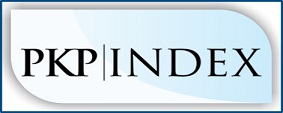Pengembangan Bahan Ajar dan LKS Berbasis Generative Multi-Representation Learning (GMRL) untuk Peningkatan Kemampuan Berpikir Aljabar
Keywords:
berpikir aljabar, development research, IDI, GMRL
Abstract
Penelitian ini bertujuan untuk mengembangkan bahan ajar dan Lembar Kerja Siswa (LKS) berbasis GMRL untuk meningkatkan kemampuan berpikir aljabar. Metode yang digunakan dalam penelitian ini adalah metode pengembangan dengan prosedur sebagaimana ditetapkan oleh Instructional Development Institute, yang meliputi tiga tahapan besar: define, develop dan,evaluate. Hasil penelitian menunjukkan bahwa bahan ajar dan LKS yang dikembangkan telah memnuhi kriteria valid dan memiliki tingkat keterbacaan tinggi, serta dapat digunakan dalam pembelajaran matematika khususnya dalam materi yang berkaitan dengan aljabar
Downloads
Download data is not yet available.
References
Akker, Jan Van Den & Plomp, Tjeerd. (1994). Educational Development in Developing countries. Dalam Skutsch, Margaret M., Opdam, J. Hans M. And Nordholt, Nico G. Schulte (Eds), Toward Sustainable Development. Enschede: Technology and Development Group University Of Twente.
Al Jupri, (2015). The Use of Applets to Improve Indonesian Student Performance in Algebra. Disertasi. Utrecht: Freudenthal Institute for Science and Mathematics Education, Faculty of Science, Utrecht University / FIsme Scientific Library (formerly published as CD-β Scientific Library), no. 89.
Habibi, M, Darhim, Turmudi (2018). Self-Determination in Mathematics Learning Process by Using Generative Multi-Representation Learning (GMRL) Model. Journal Physic: Conf. Series. 1097 012155.
Kaput, J.J,& Blanton, M. (2005). Algebrafying the elementary mathematics experience in a teachercentered,systemic way. In T. A. Romberg, T. P. Carpenter, & F. Dremock (Eds.), Understanding Mathematics and Science Matters. Mahwah, NJ: Lawrence Erlbaum Associates.
Kieran, C. (1992). The Learning and Teaching of School Algebra. In D. A. Grouws (Ed.), Handbook of Research on Mathematics Teaching and Learning (pp. 390-419). New York: Macmillan.
Kieran, C (2004).Algebraic Thinking in the Early Grades: What Is It? The Mathematics Educator: 8(1), 139 – 151.
Muthmainnah, M. et al 2017 Analysis of Students’ Error in Algebraic Thinking Test. J. Phys.: Conf. Ser. 895, 012089
Ng Swee Fong (2004). Developing Algebraic Thinking In Early Grades: Case Study Of The Singapore Primary Mathematics Curriculum. The Mathematics Educator, 8(1) ,39-59
Ovez, F.T.D & Uyangor, S.M (2012). Evaluation of 12th grade of secondary mathematics curriculum: algebra learning domain. Procedia - Social and Behavioral Sciences. 46, 2156 – 2162
Othman Ali Alghtani & Nasser Alsayed Abdulhamied (2010). The Effectiveness of Geometric Representative Approach in Developing Algebraic Thinking of Fourth Grade Students. Procedia Social and Behavioral Sciences, 8, 256–263
Sfard A. (1991). On the Dual Nature Of Mathematical Conceptions: Reflections on Processes and Objects as Dìfferent Sides of the Same Coin. Educational Studies in Mathematics 22, 1-36
Vennerush, G.P; Marquez, E & Larsen, J. (2005). Embedding Algebraic Thinking Throughout The Mathematics Curriculum. Mathematics Teaching in The Middle School (NCTM). 11(2), 86-93.
Al Jupri, (2015). The Use of Applets to Improve Indonesian Student Performance in Algebra. Disertasi. Utrecht: Freudenthal Institute for Science and Mathematics Education, Faculty of Science, Utrecht University / FIsme Scientific Library (formerly published as CD-β Scientific Library), no. 89.
Habibi, M, Darhim, Turmudi (2018). Self-Determination in Mathematics Learning Process by Using Generative Multi-Representation Learning (GMRL) Model. Journal Physic: Conf. Series. 1097 012155.
Kaput, J.J,& Blanton, M. (2005). Algebrafying the elementary mathematics experience in a teachercentered,systemic way. In T. A. Romberg, T. P. Carpenter, & F. Dremock (Eds.), Understanding Mathematics and Science Matters. Mahwah, NJ: Lawrence Erlbaum Associates.
Kieran, C. (1992). The Learning and Teaching of School Algebra. In D. A. Grouws (Ed.), Handbook of Research on Mathematics Teaching and Learning (pp. 390-419). New York: Macmillan.
Kieran, C (2004).Algebraic Thinking in the Early Grades: What Is It? The Mathematics Educator: 8(1), 139 – 151.
Muthmainnah, M. et al 2017 Analysis of Students’ Error in Algebraic Thinking Test. J. Phys.: Conf. Ser. 895, 012089
Ng Swee Fong (2004). Developing Algebraic Thinking In Early Grades: Case Study Of The Singapore Primary Mathematics Curriculum. The Mathematics Educator, 8(1) ,39-59
Ovez, F.T.D & Uyangor, S.M (2012). Evaluation of 12th grade of secondary mathematics curriculum: algebra learning domain. Procedia - Social and Behavioral Sciences. 46, 2156 – 2162
Othman Ali Alghtani & Nasser Alsayed Abdulhamied (2010). The Effectiveness of Geometric Representative Approach in Developing Algebraic Thinking of Fourth Grade Students. Procedia Social and Behavioral Sciences, 8, 256–263
Sfard A. (1991). On the Dual Nature Of Mathematical Conceptions: Reflections on Processes and Objects as Dìfferent Sides of the Same Coin. Educational Studies in Mathematics 22, 1-36
Vennerush, G.P; Marquez, E & Larsen, J. (2005). Embedding Algebraic Thinking Throughout The Mathematics Curriculum. Mathematics Teaching in The Middle School (NCTM). 11(2), 86-93.
Published
2019-09-24
How to Cite
Habibi, M., Darhim, D., & Turmudi, T. (2019). Pengembangan Bahan Ajar dan LKS Berbasis Generative Multi-Representation Learning (GMRL) untuk Peningkatan Kemampuan Berpikir Aljabar. Jurnal Cendekia : Jurnal Pendidikan Matematika, 3(2), 341-350. https://doi.org/10.31004/cendekia.v3i2.115
Section
Articles



1.jpg)














